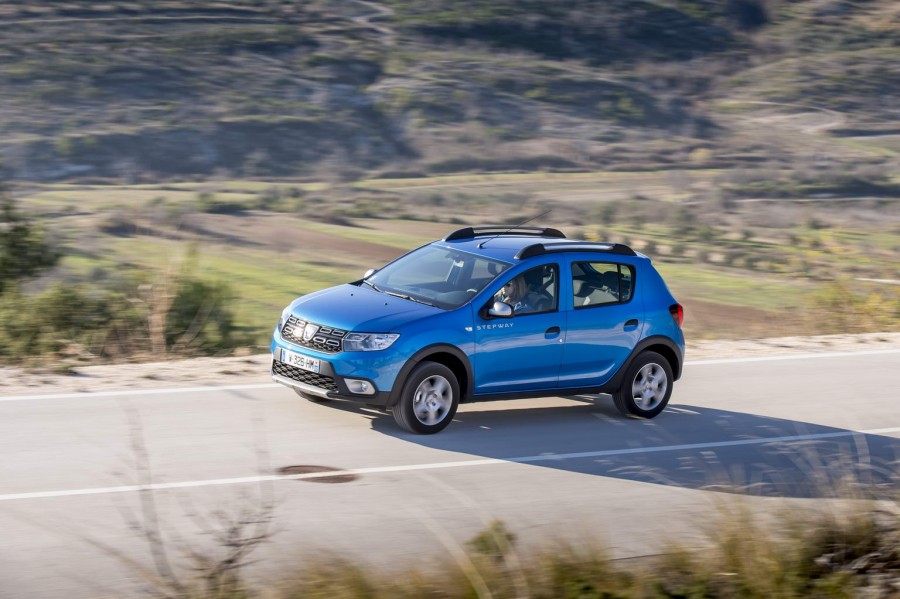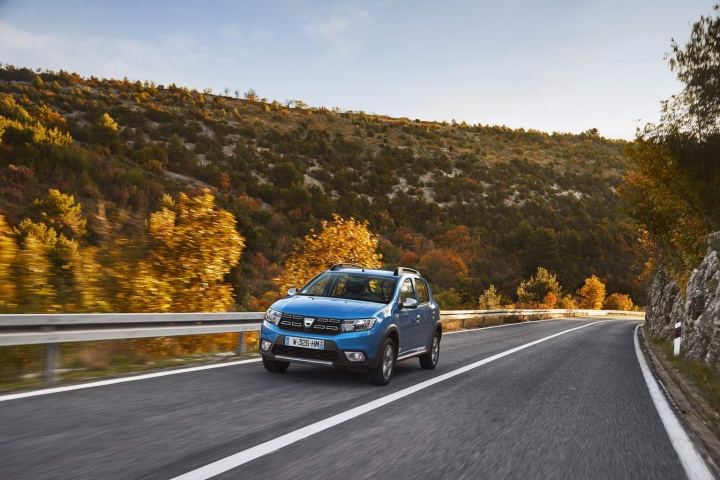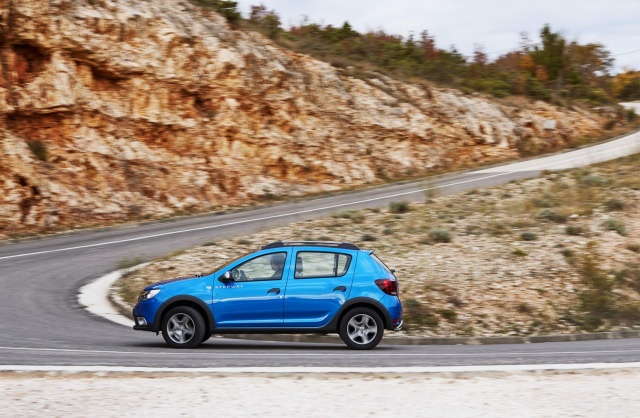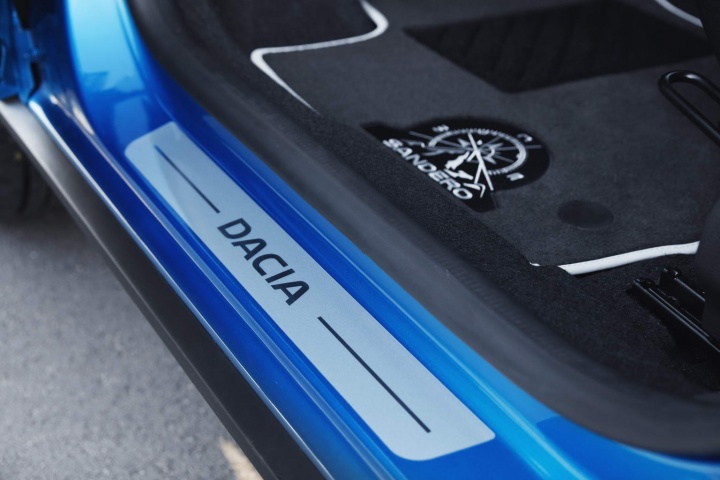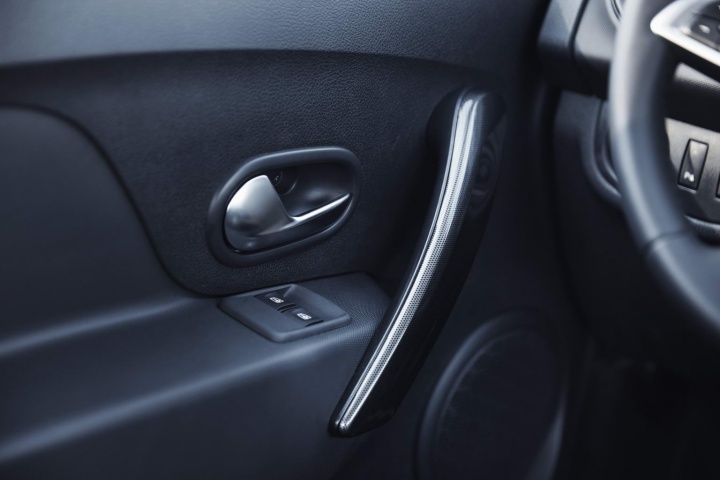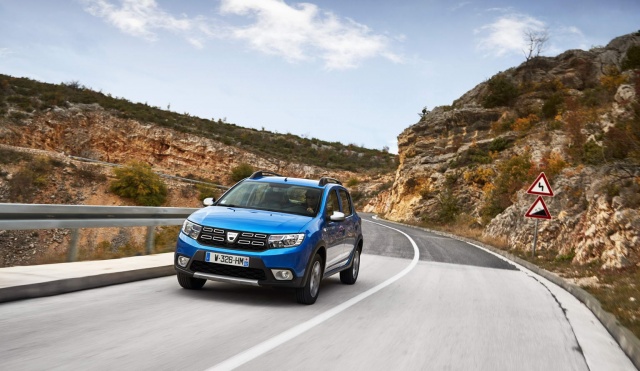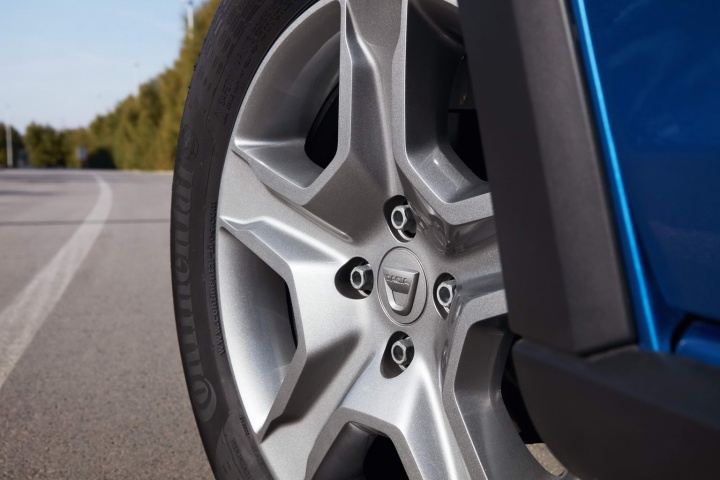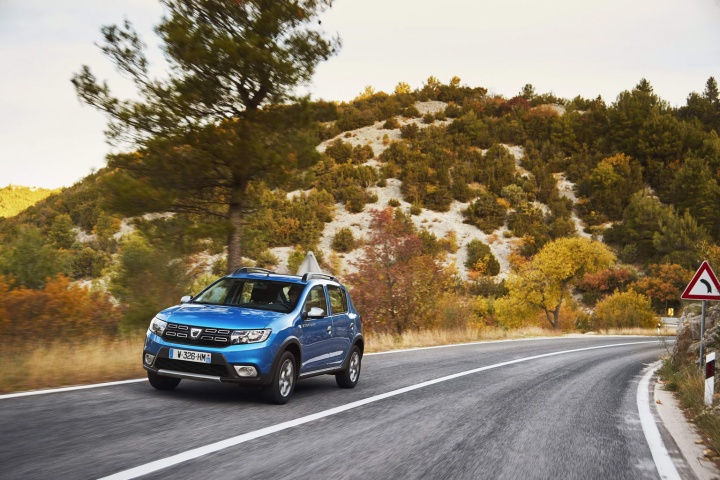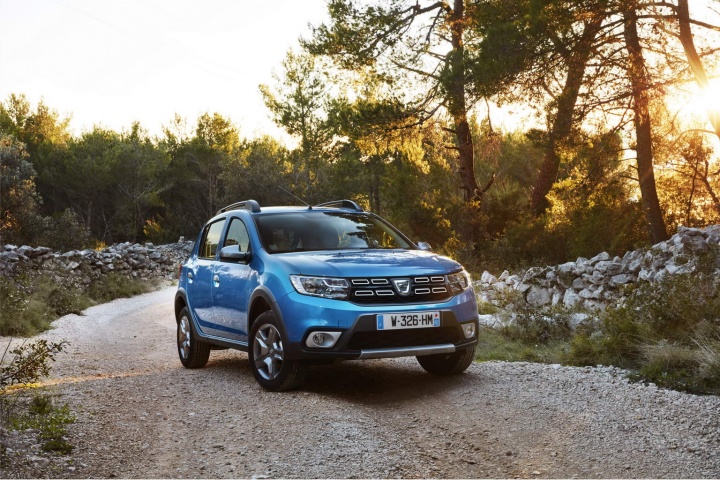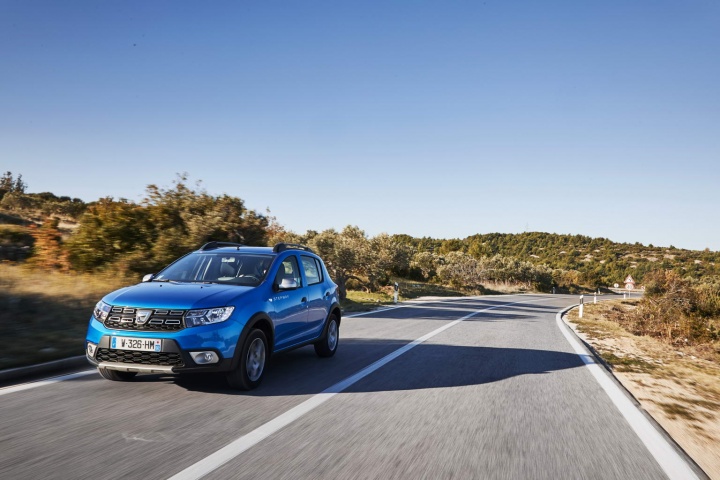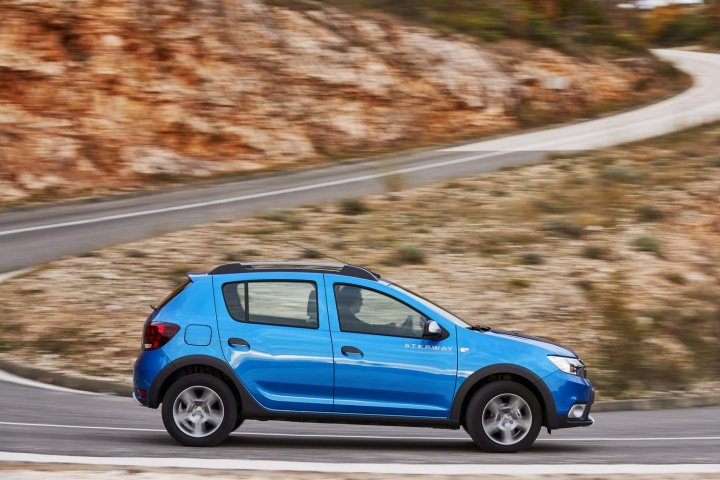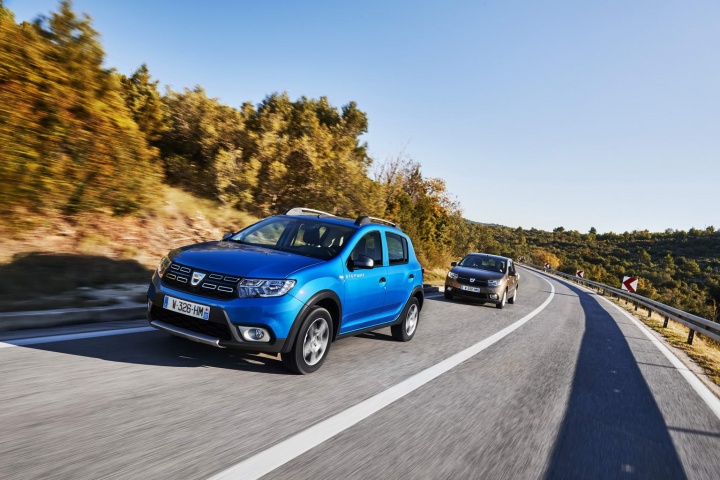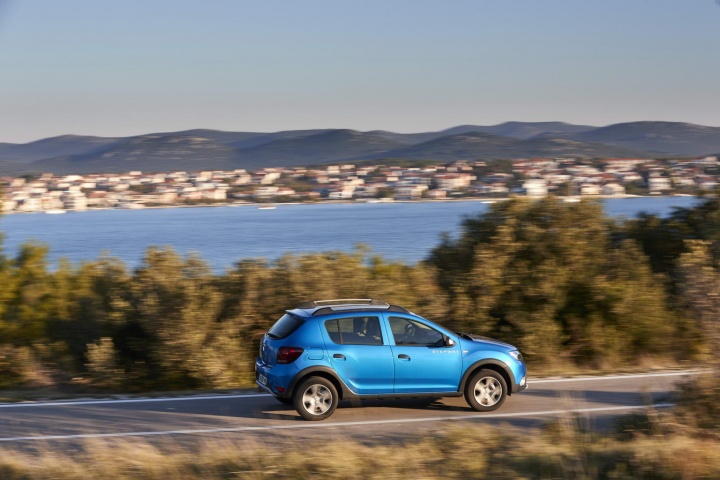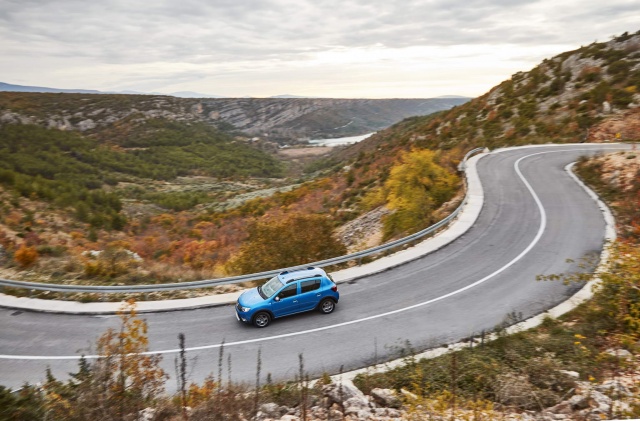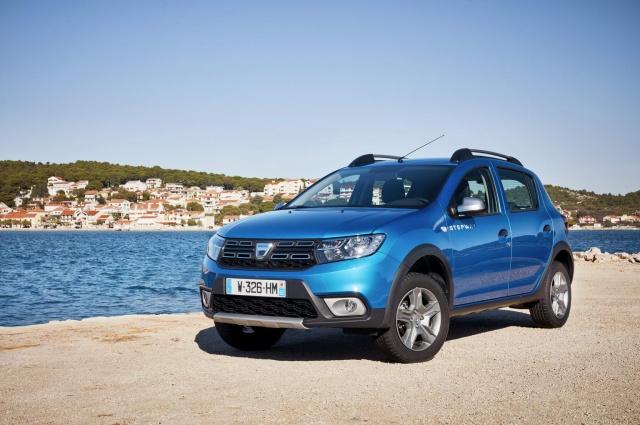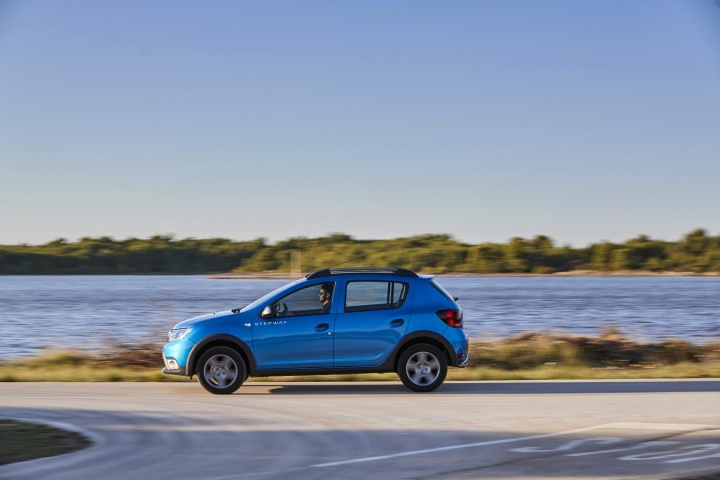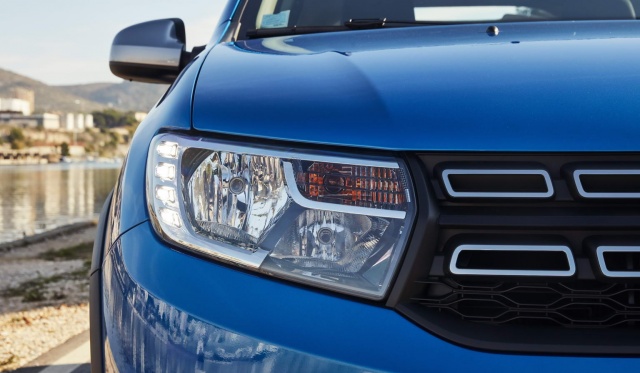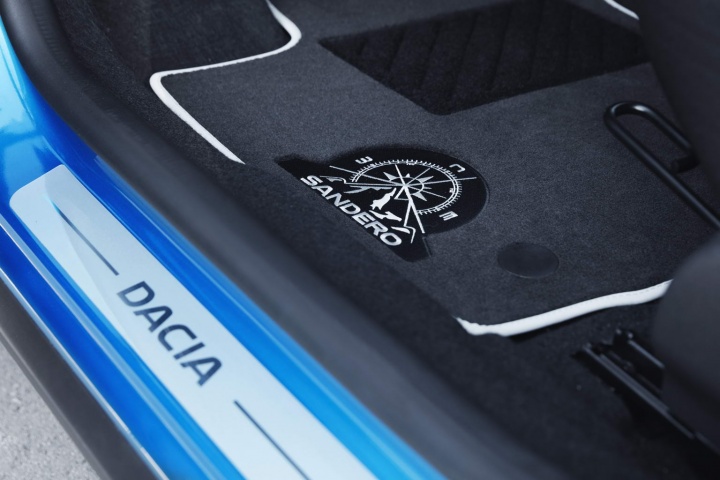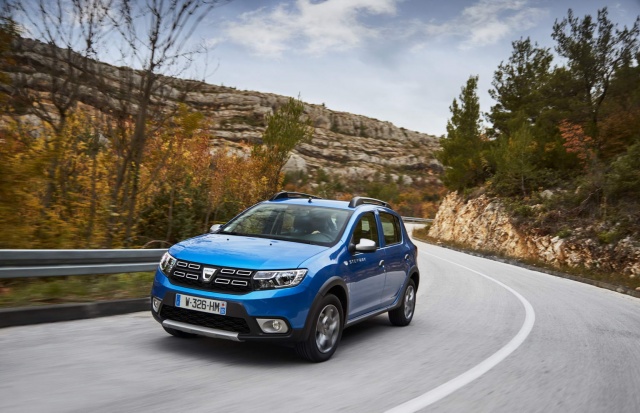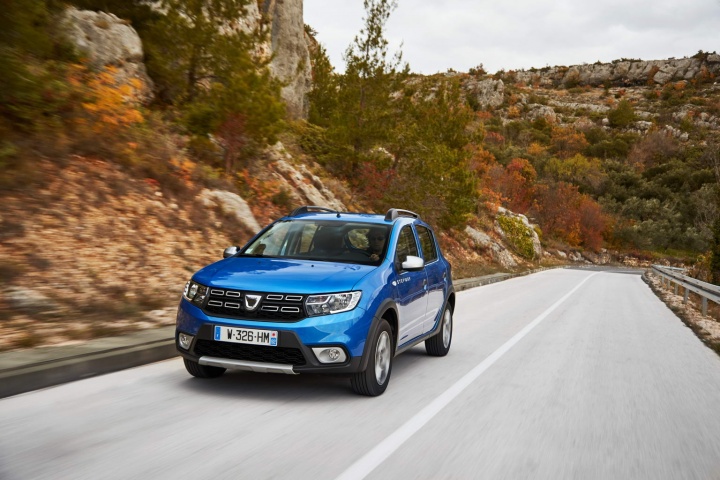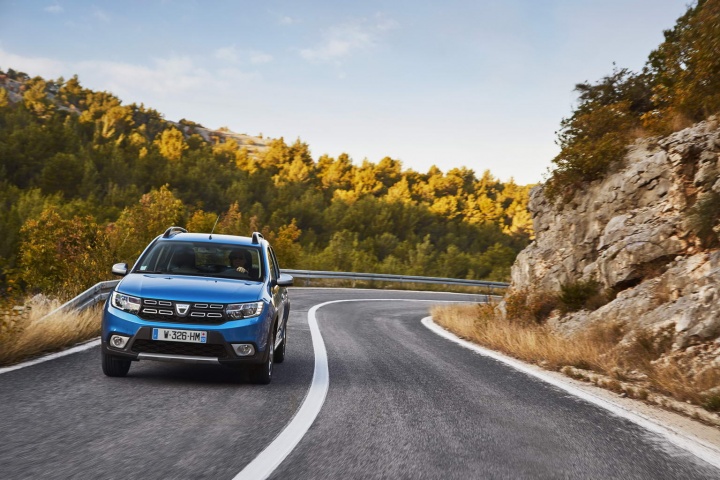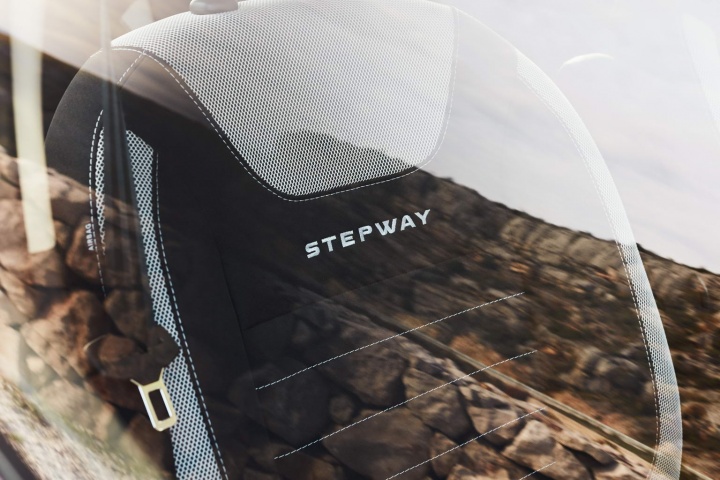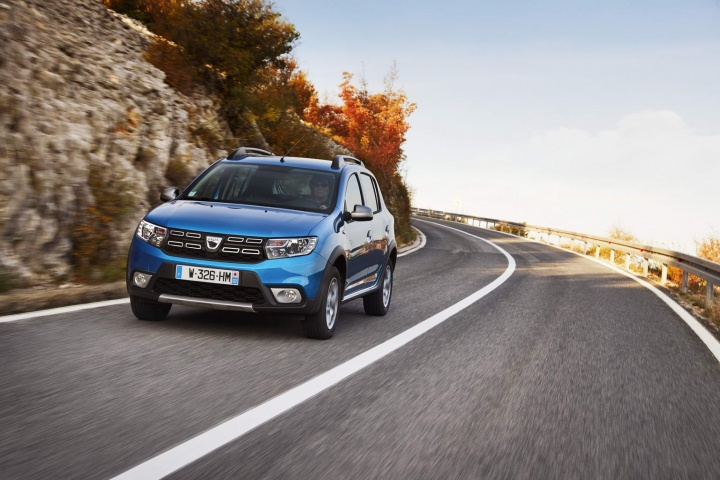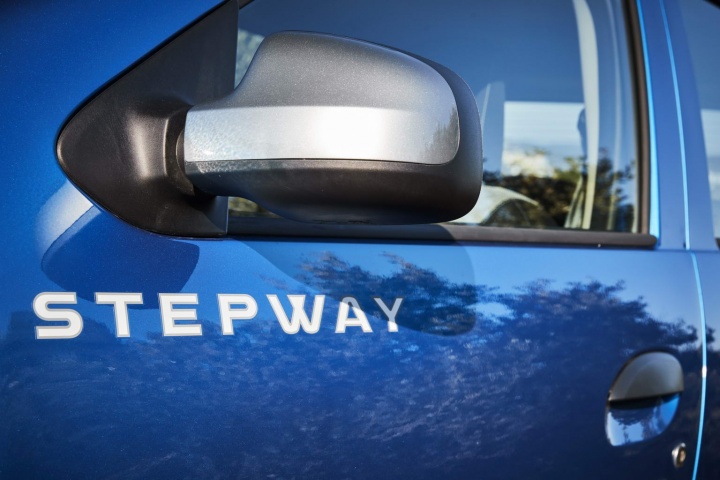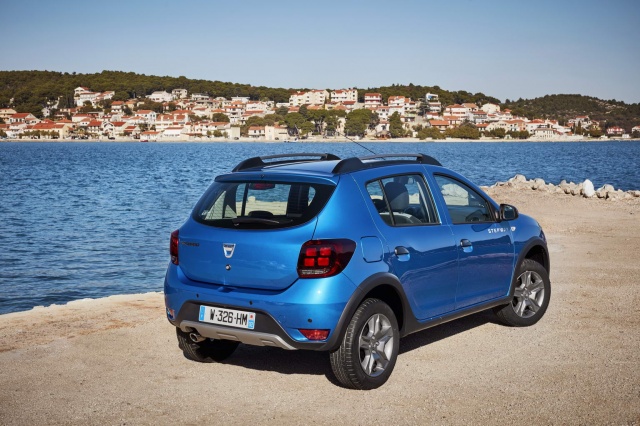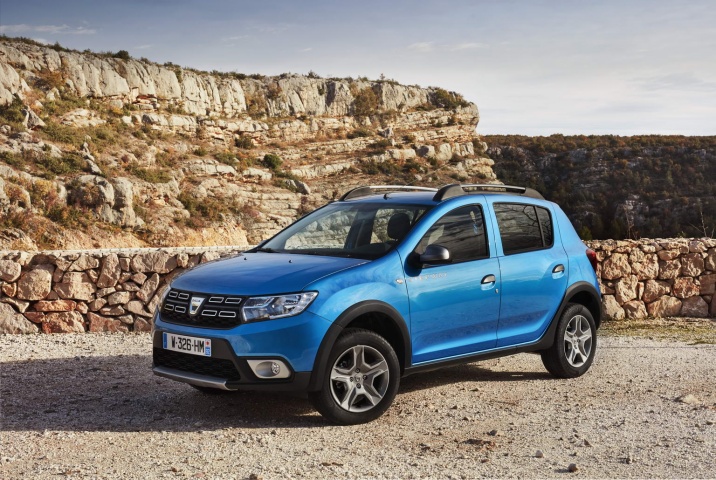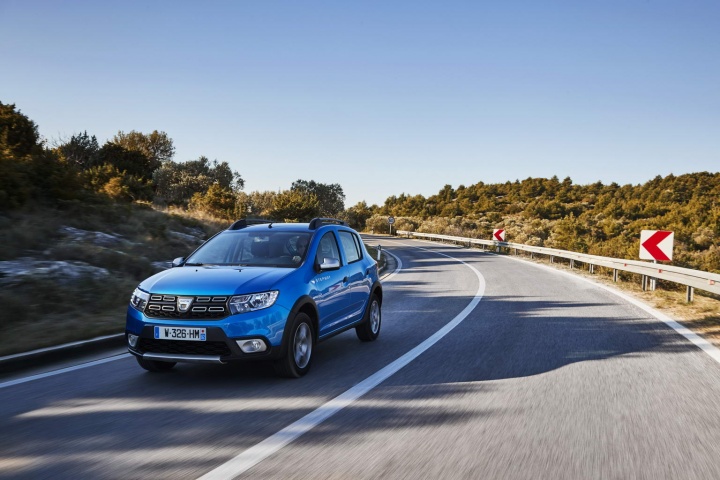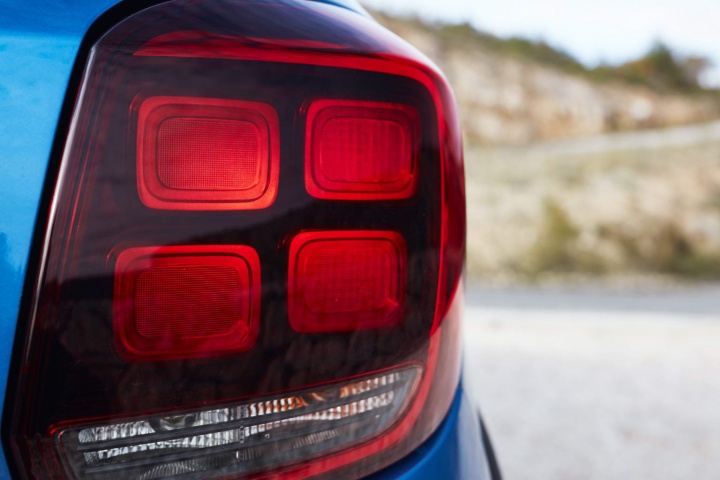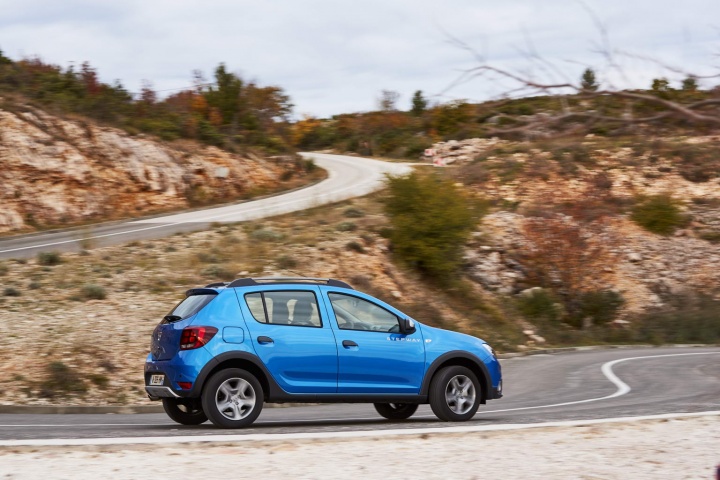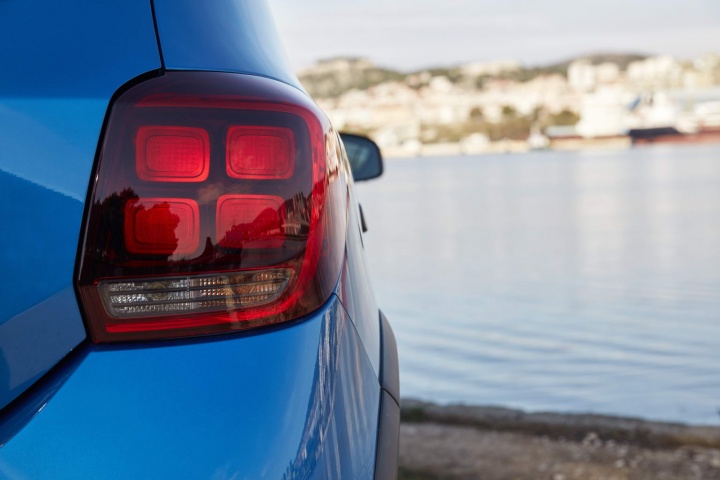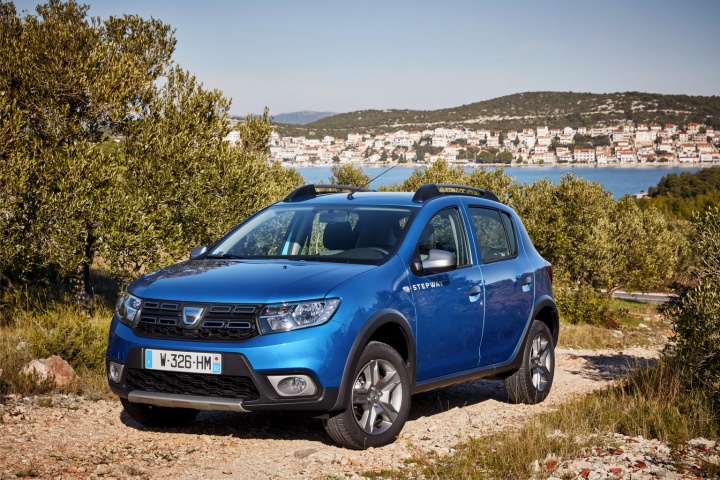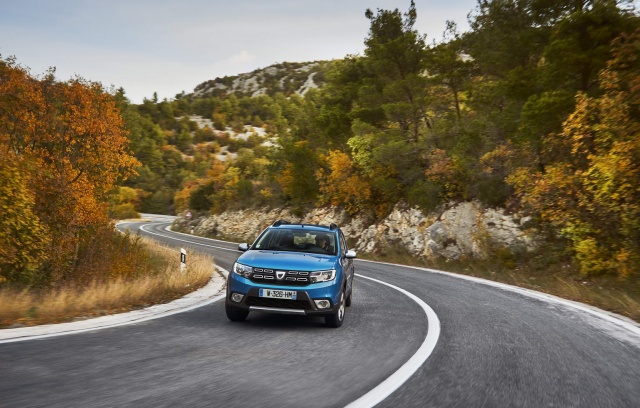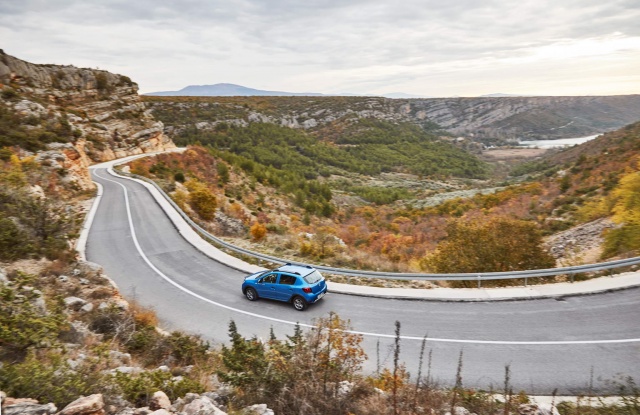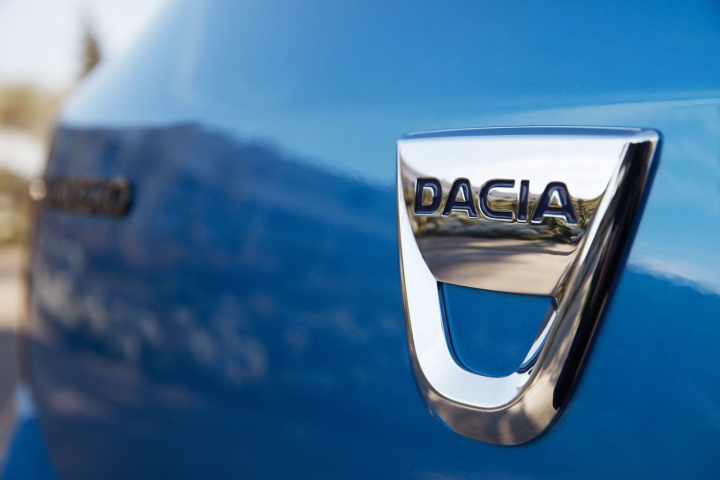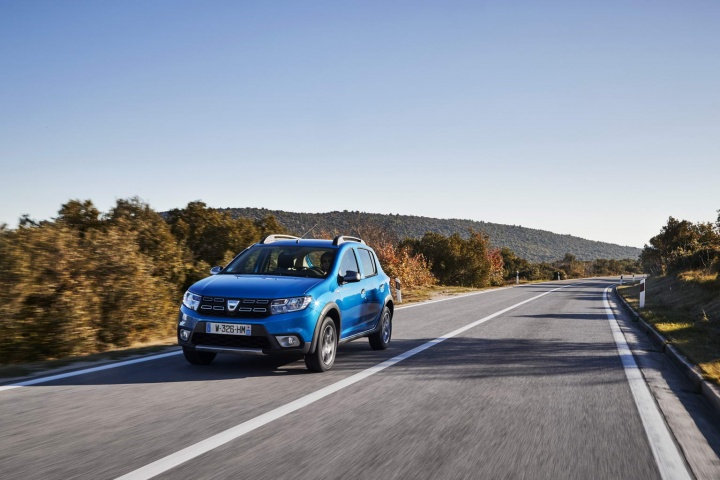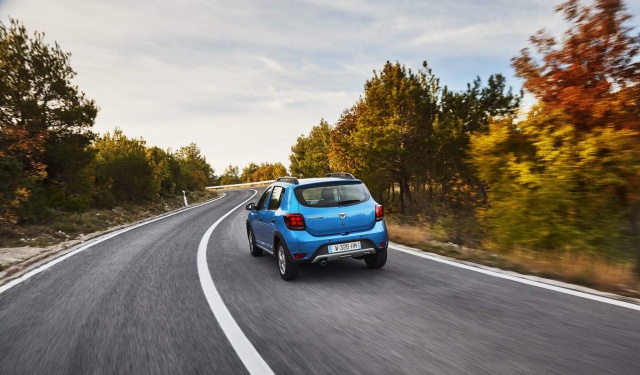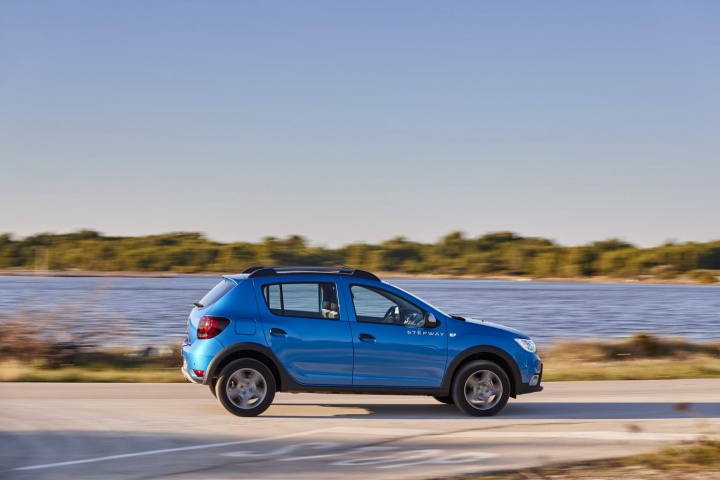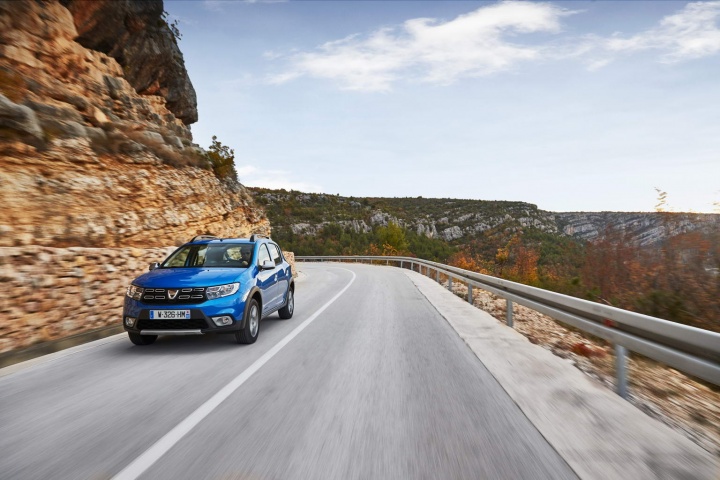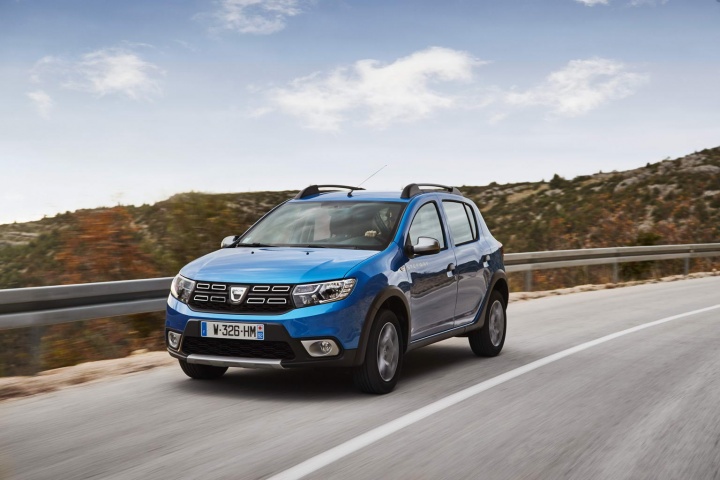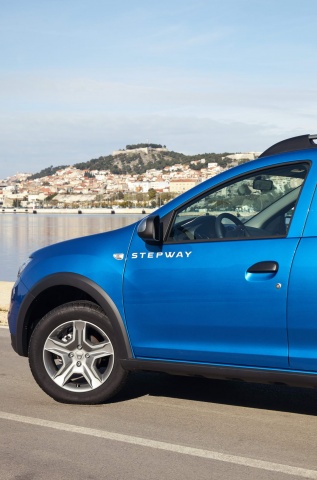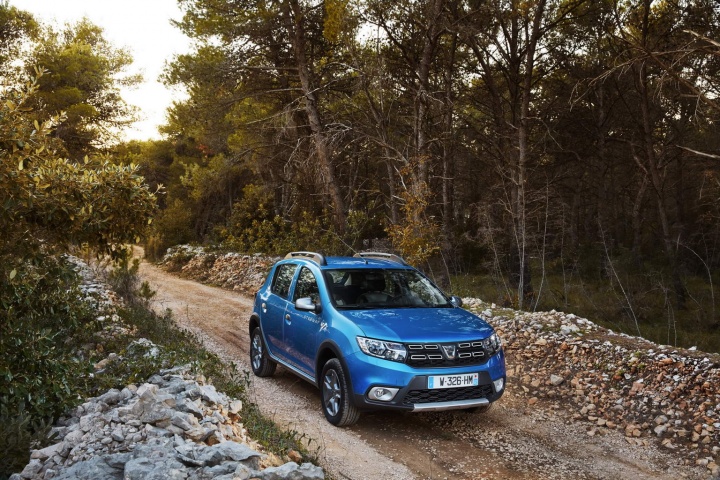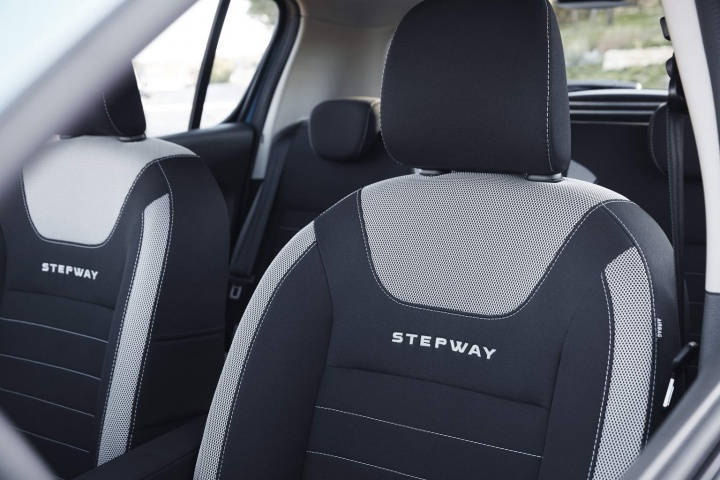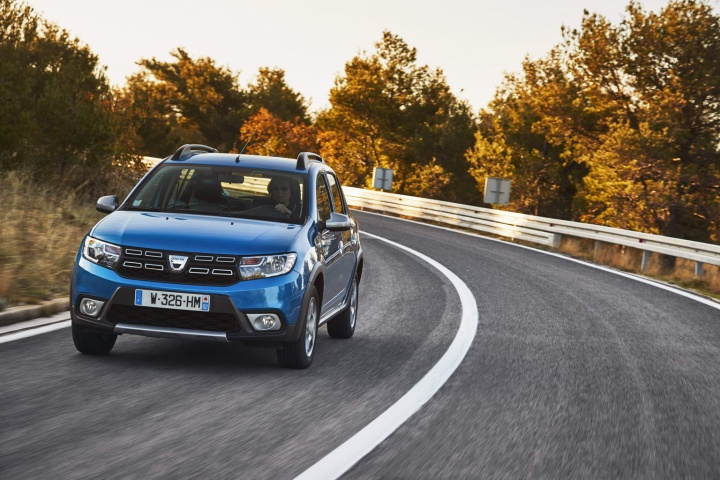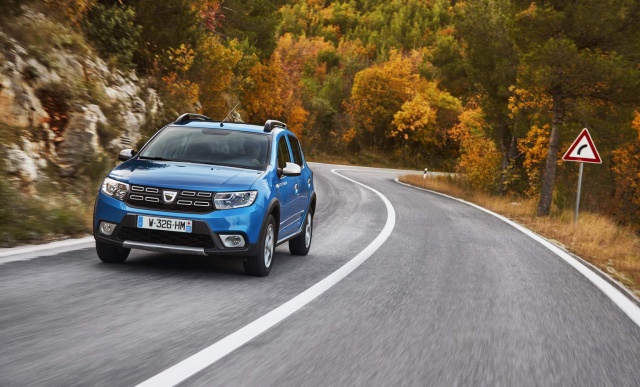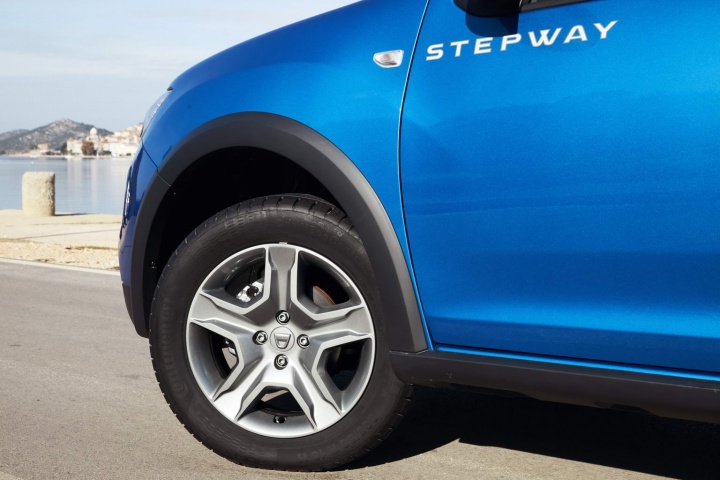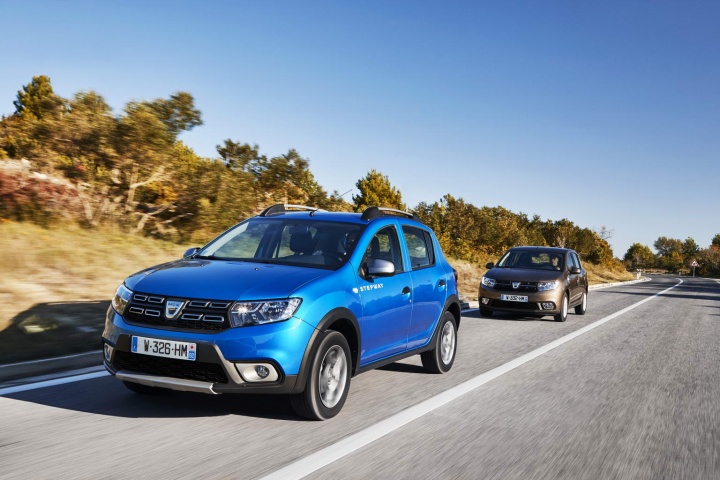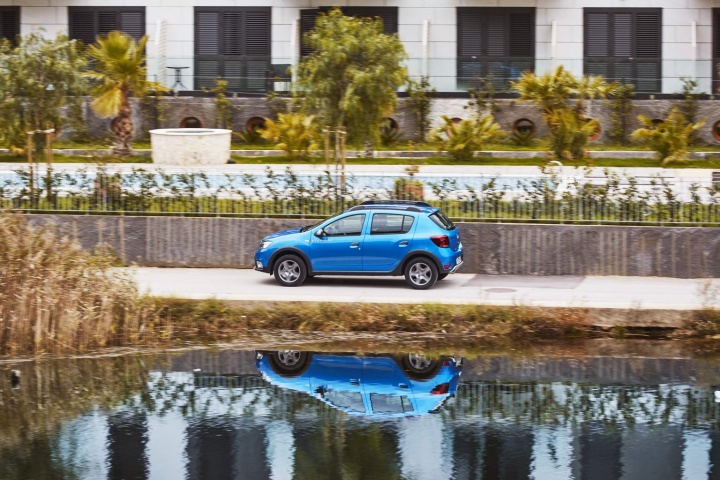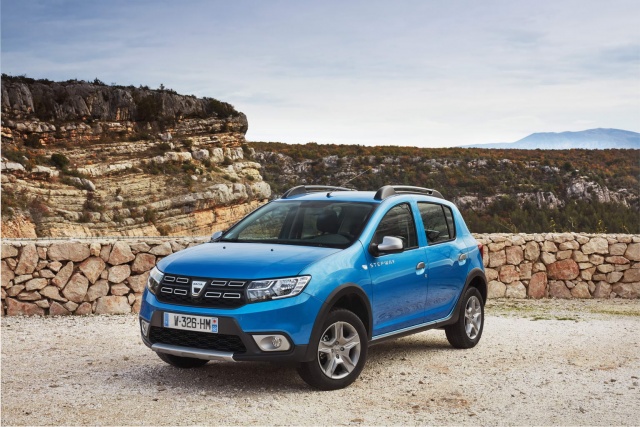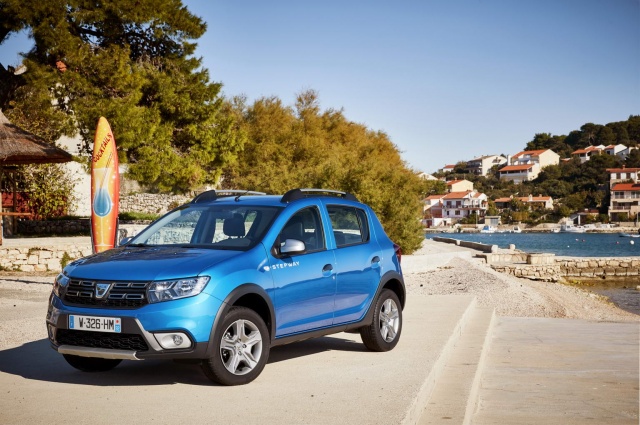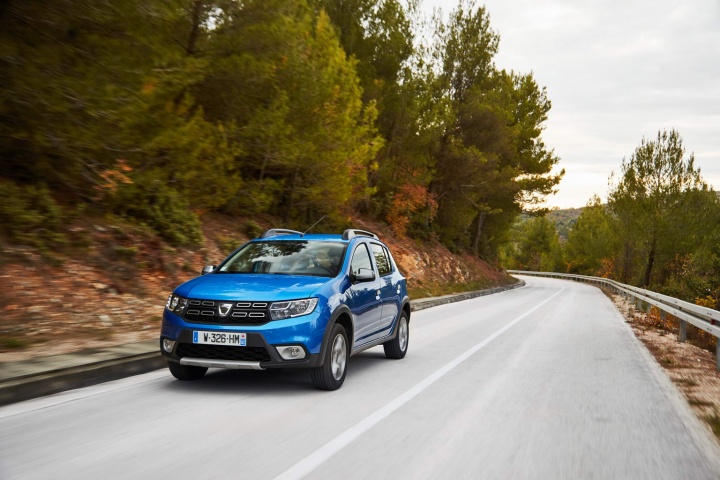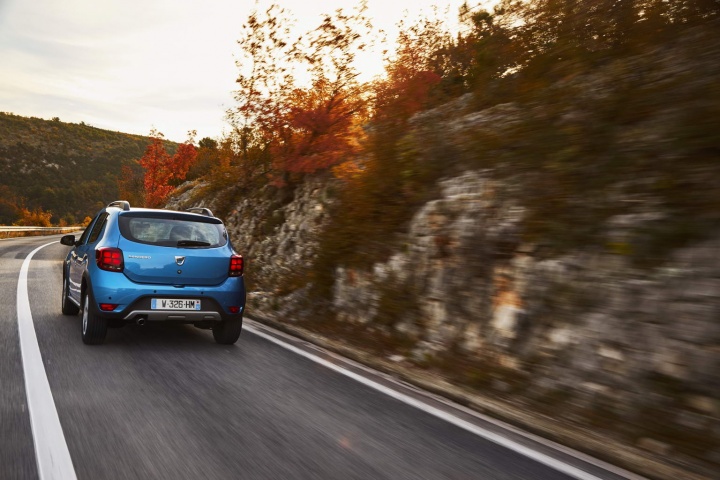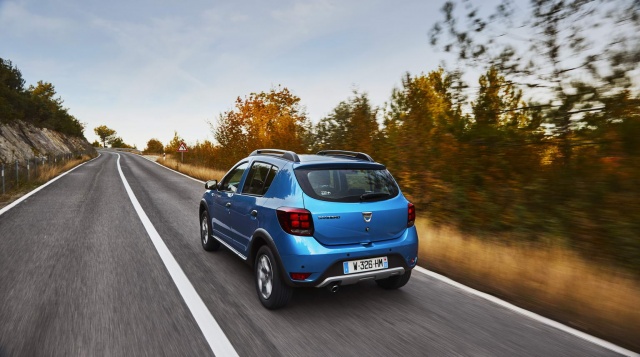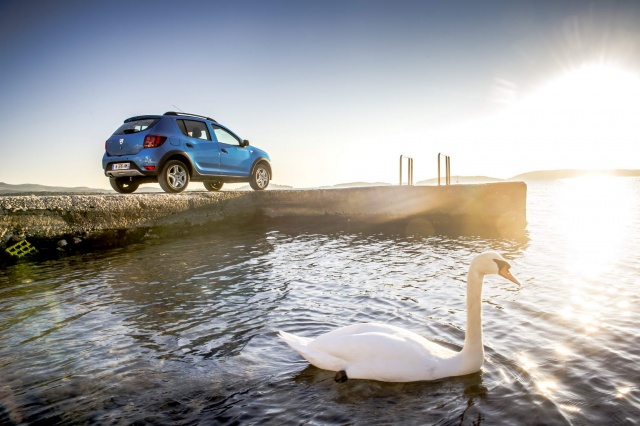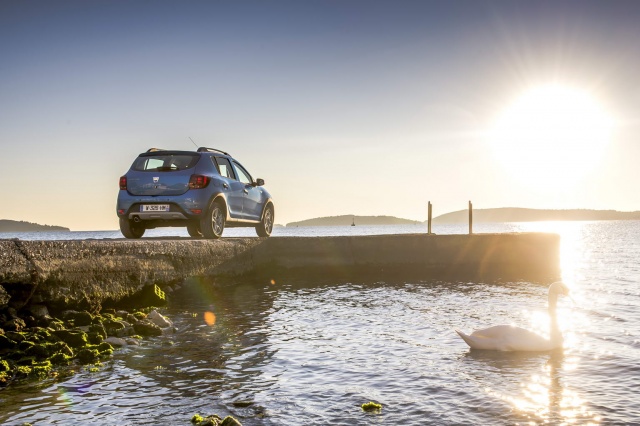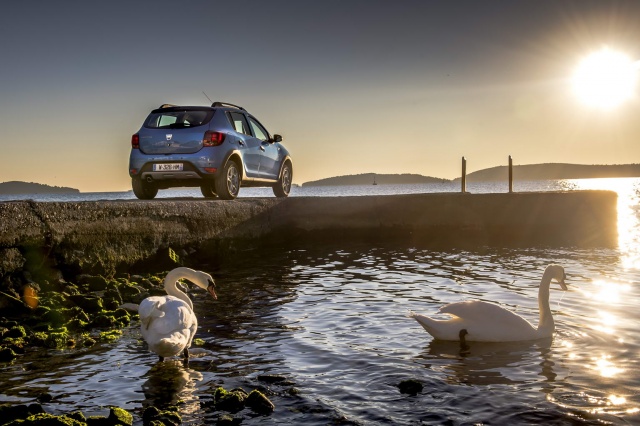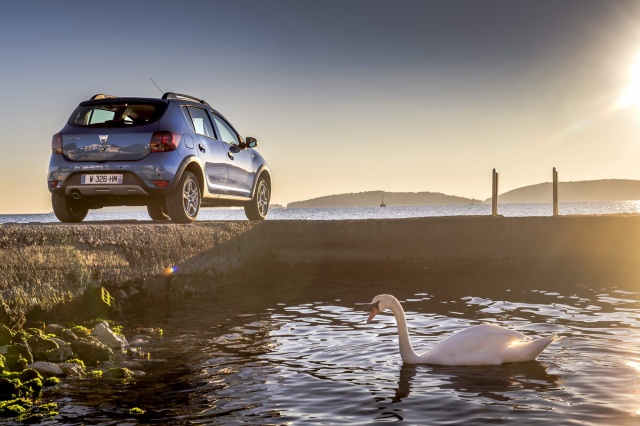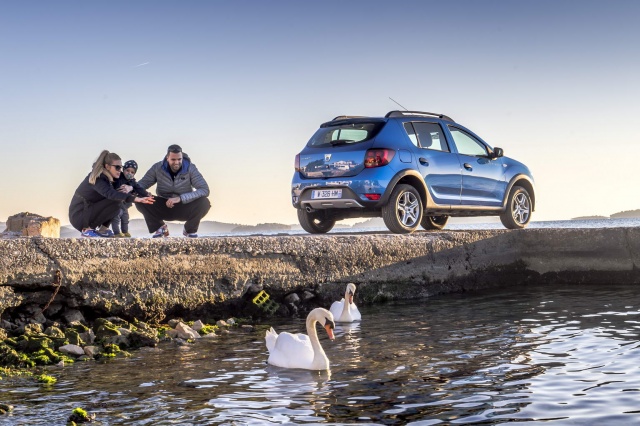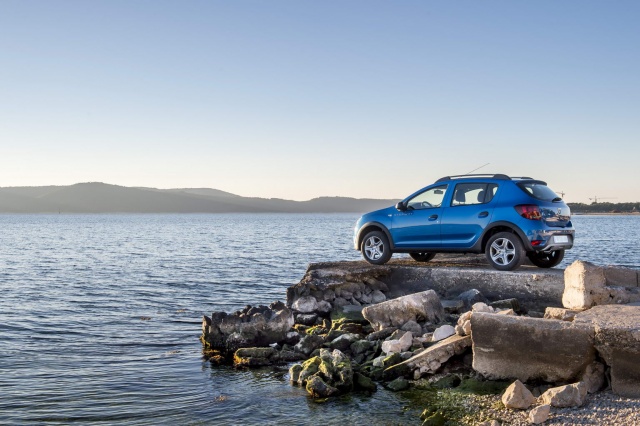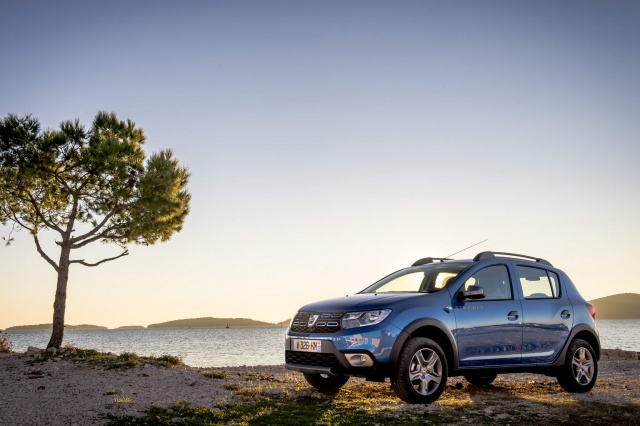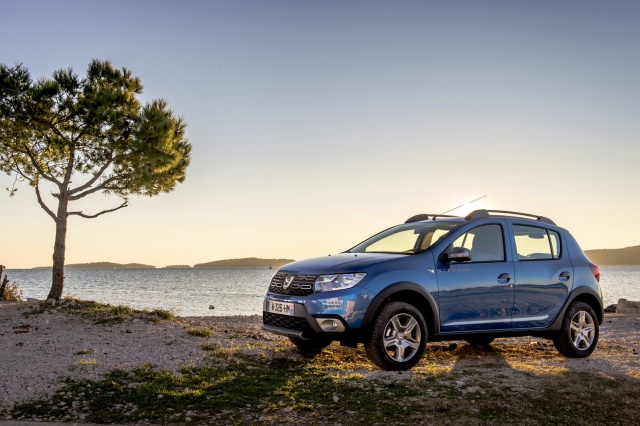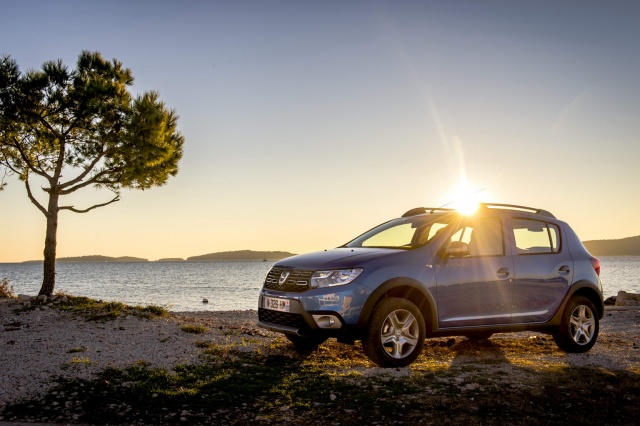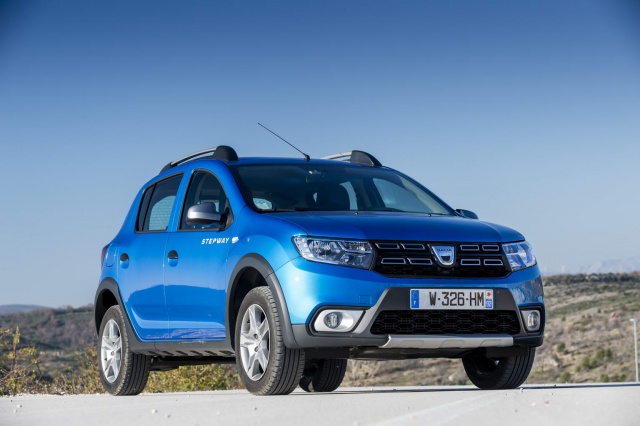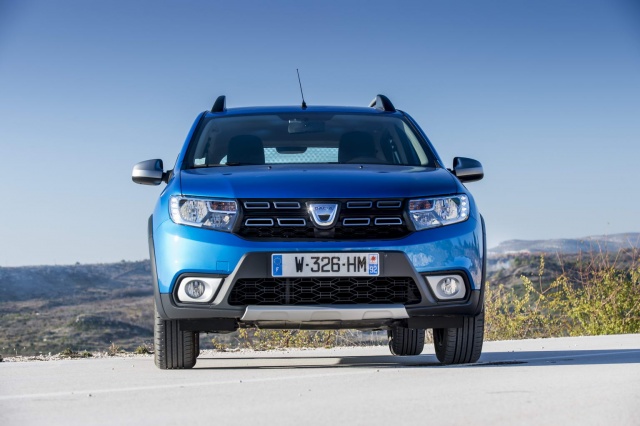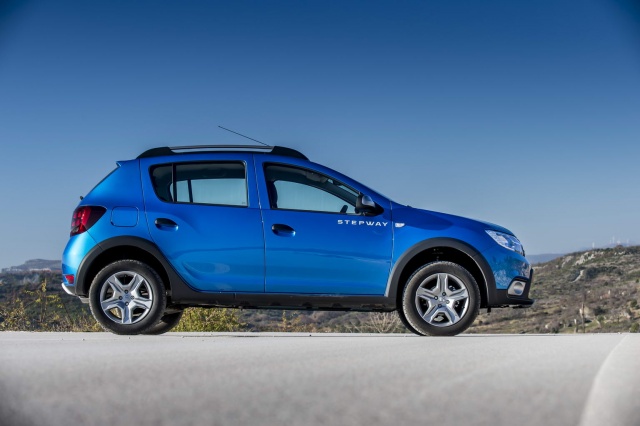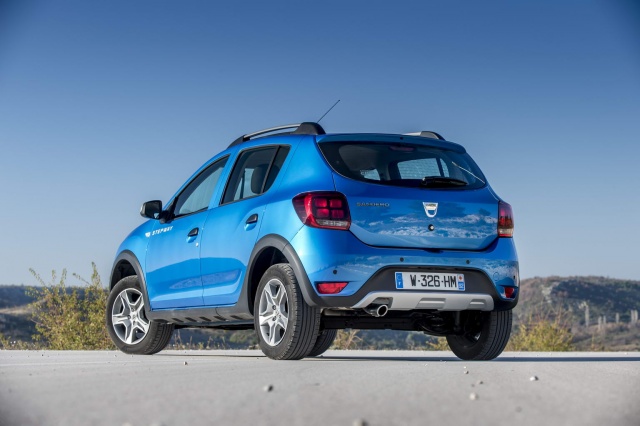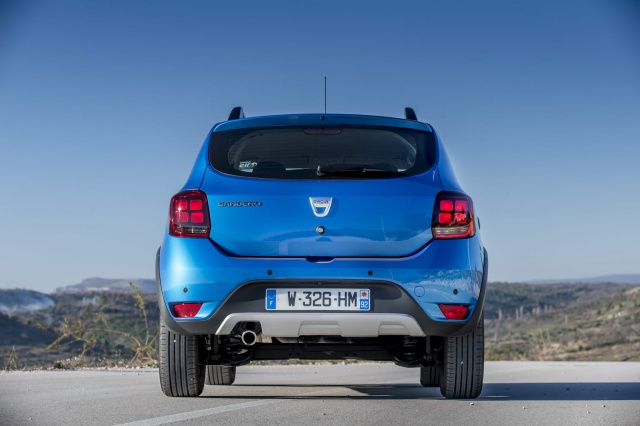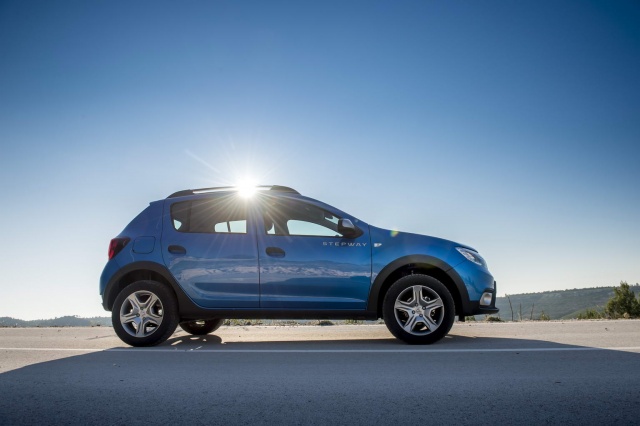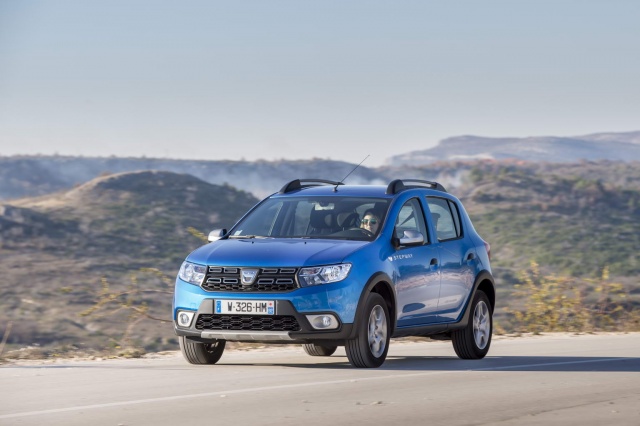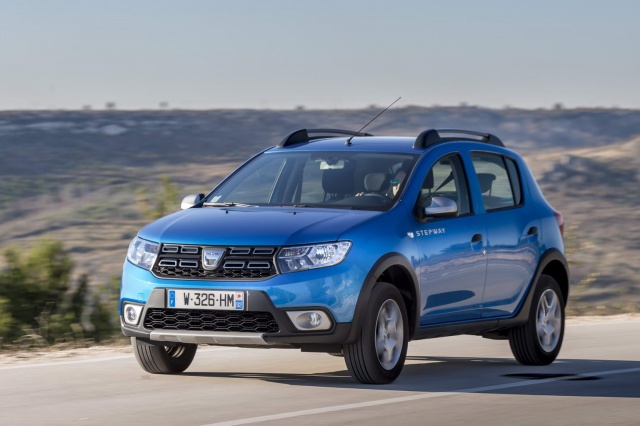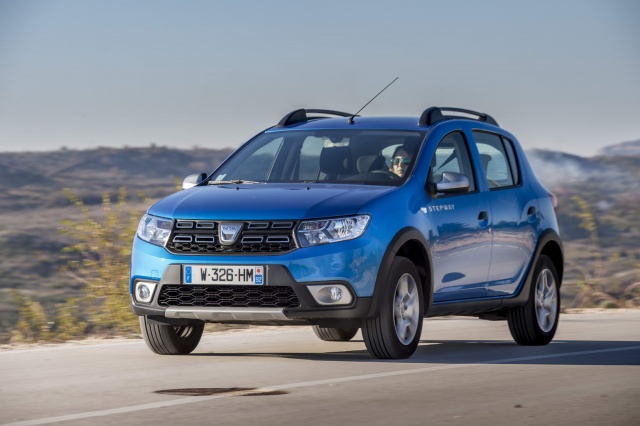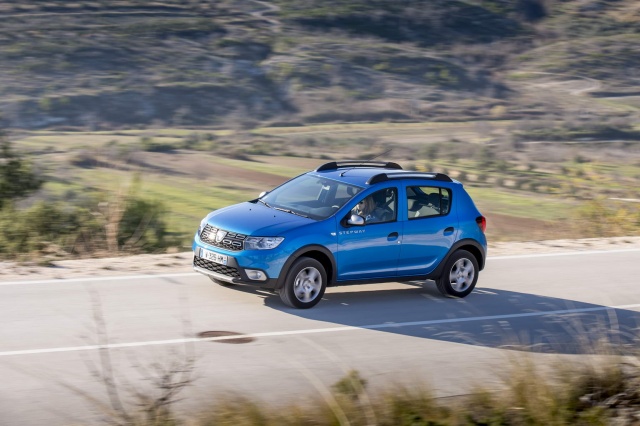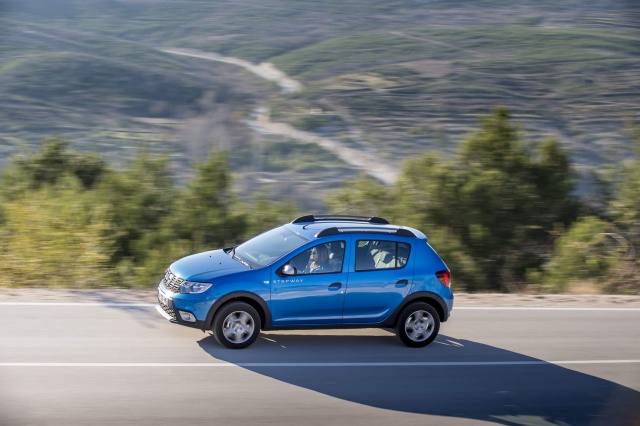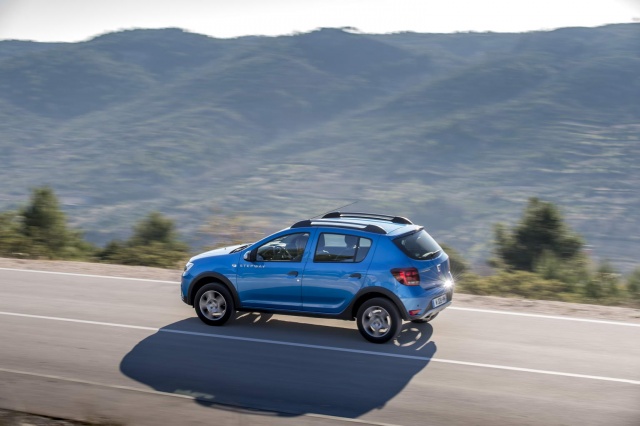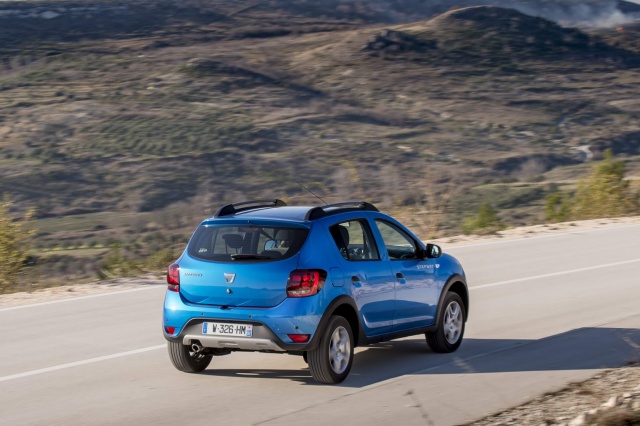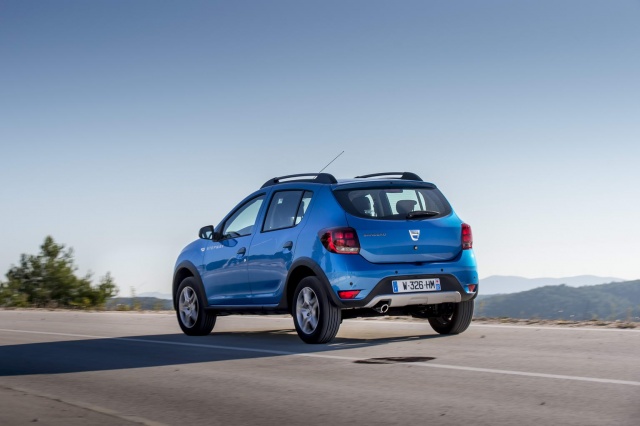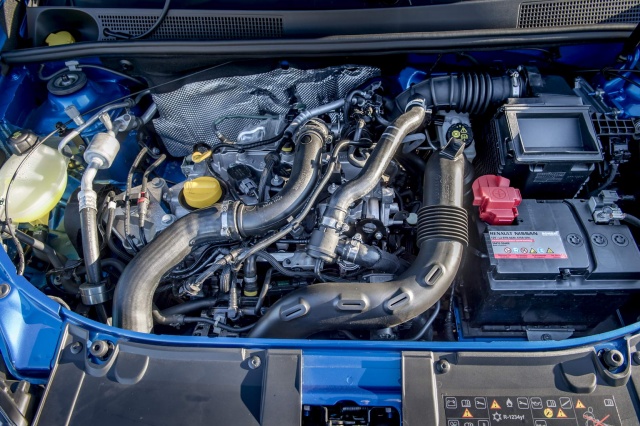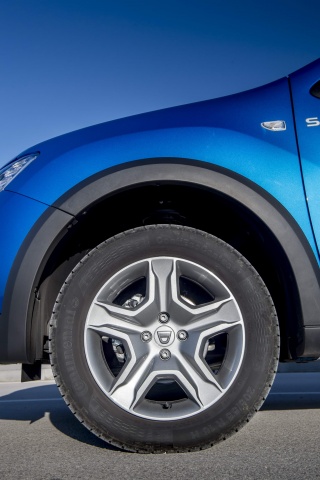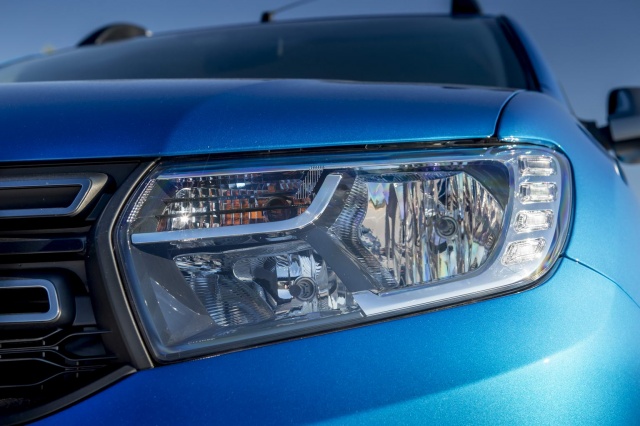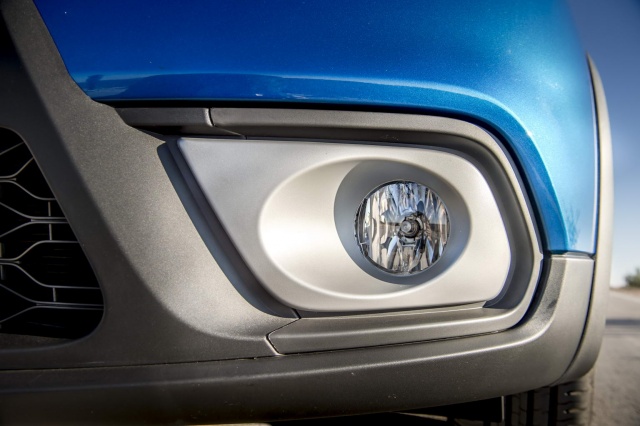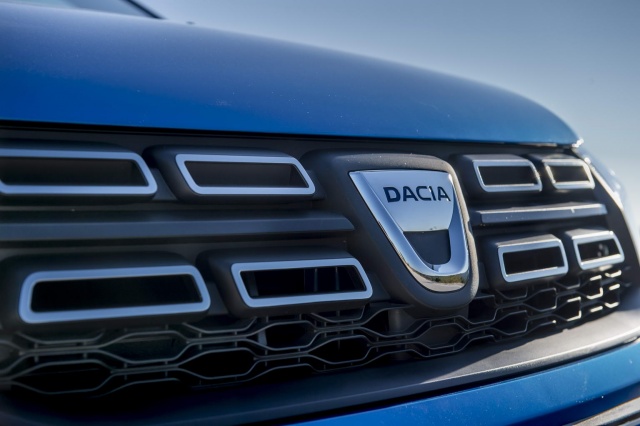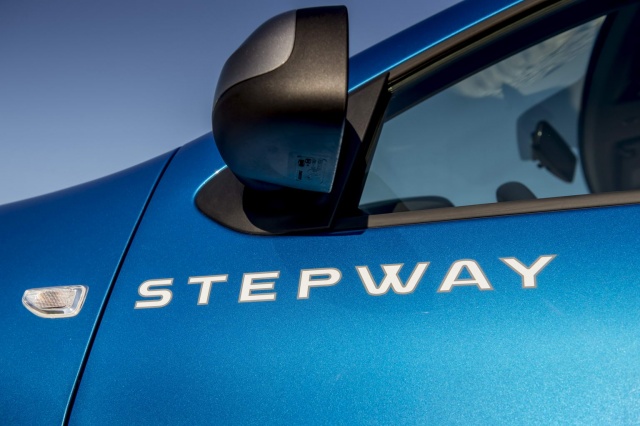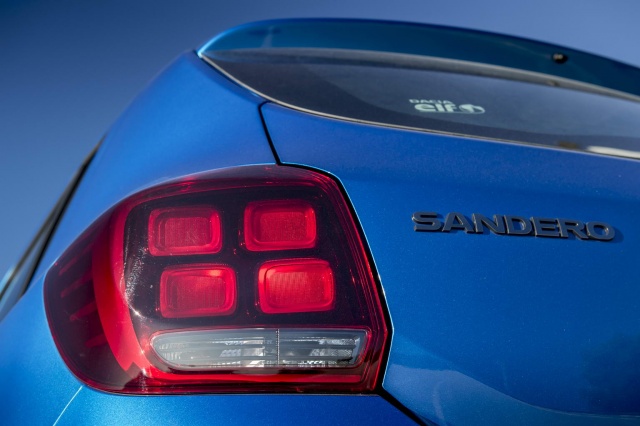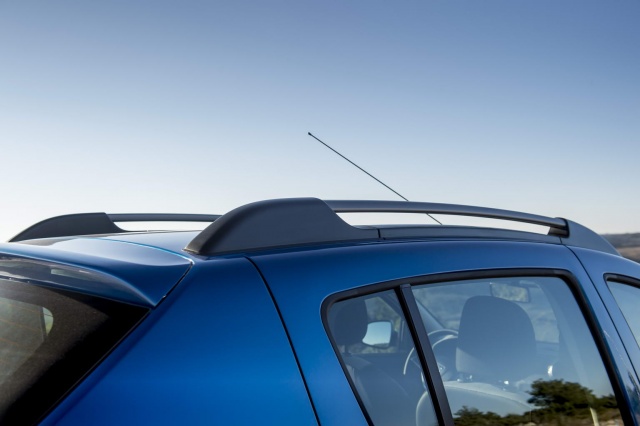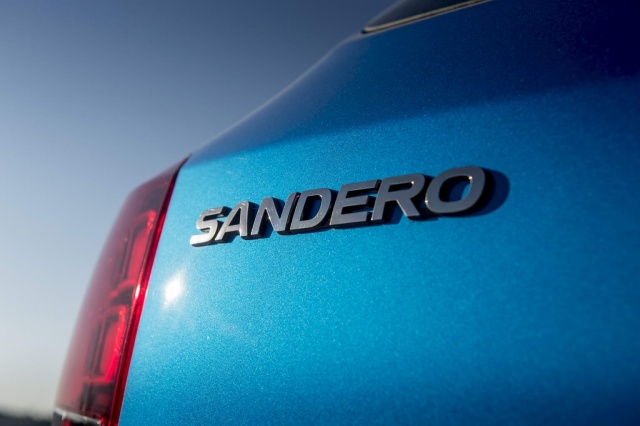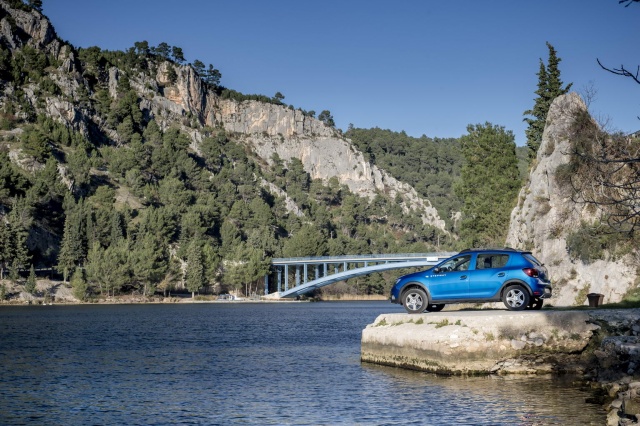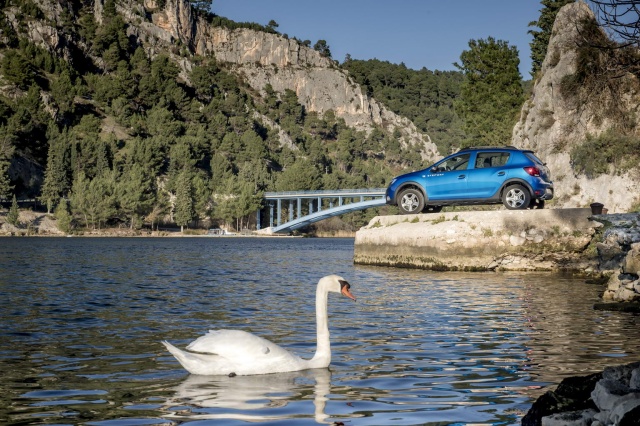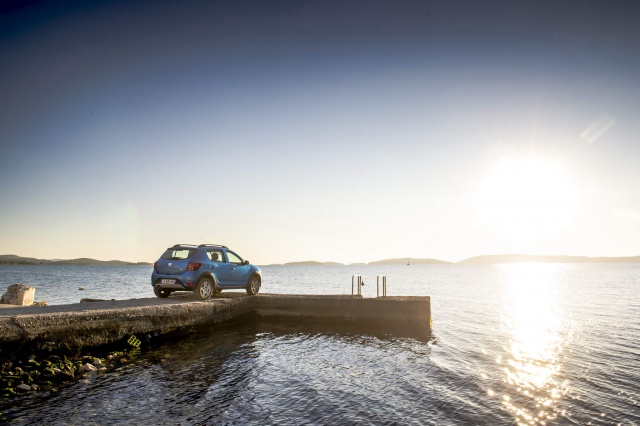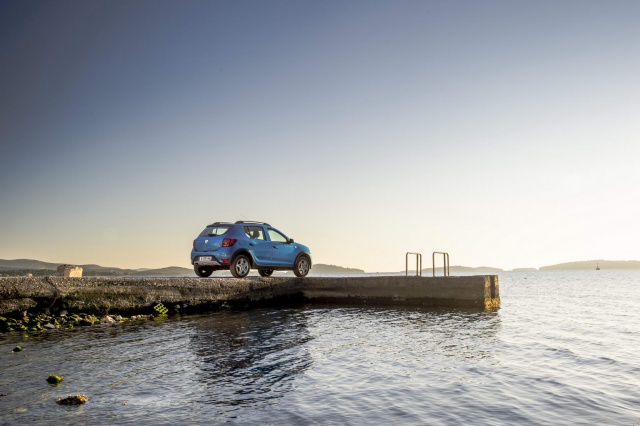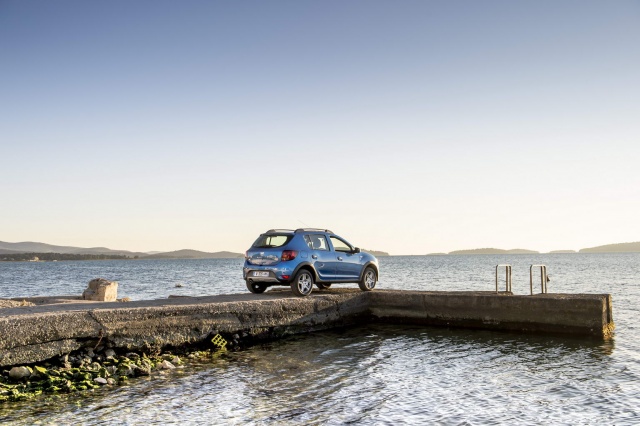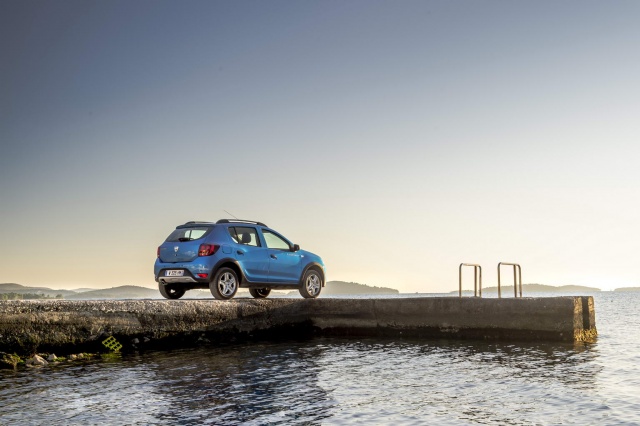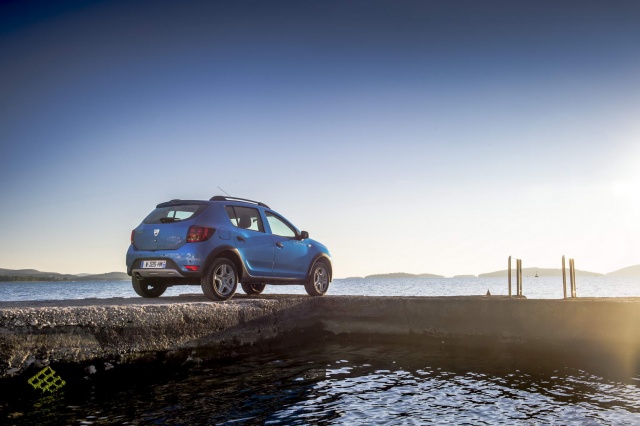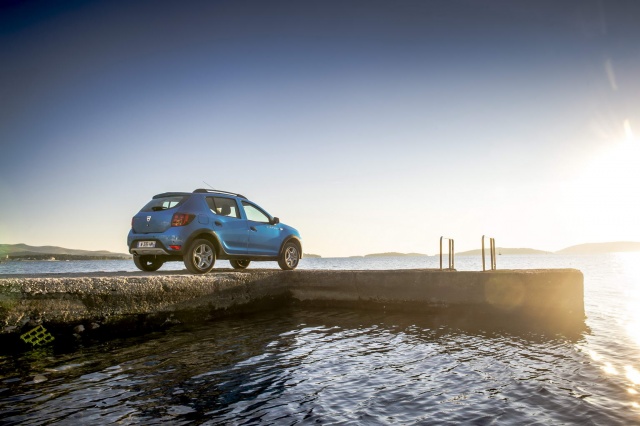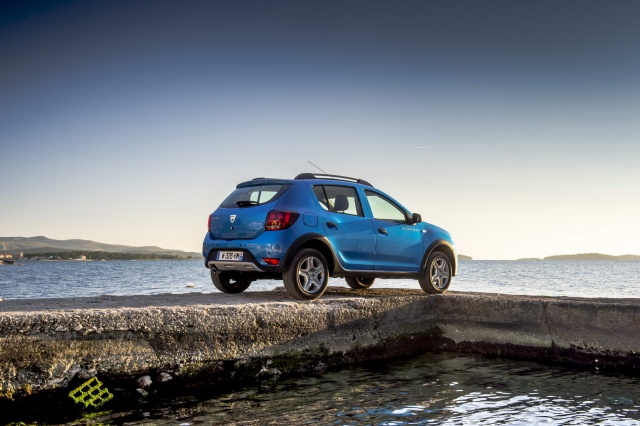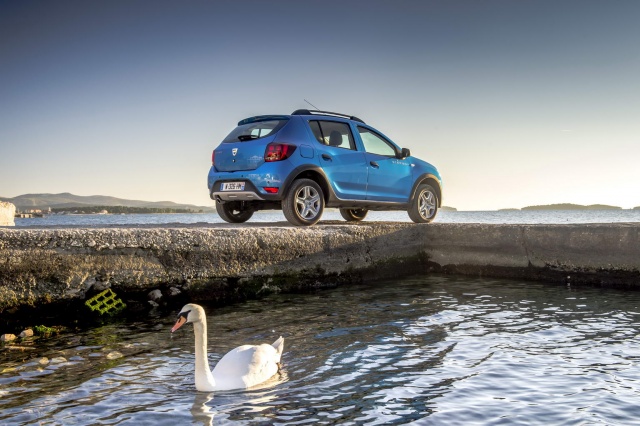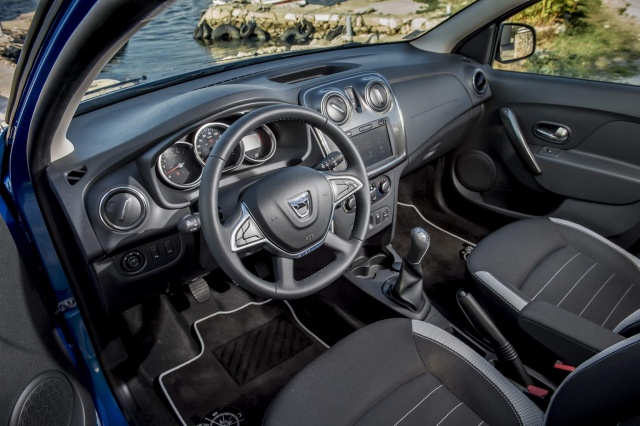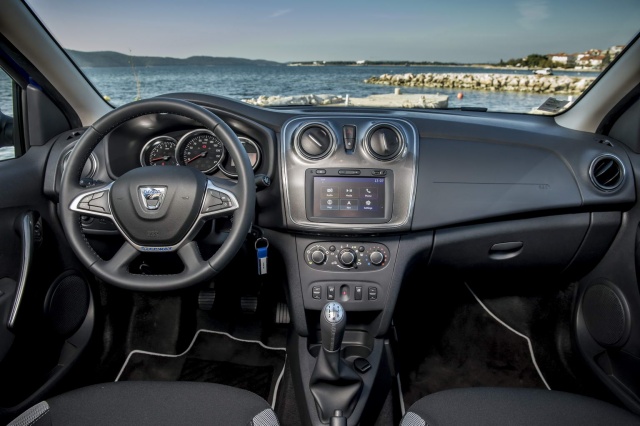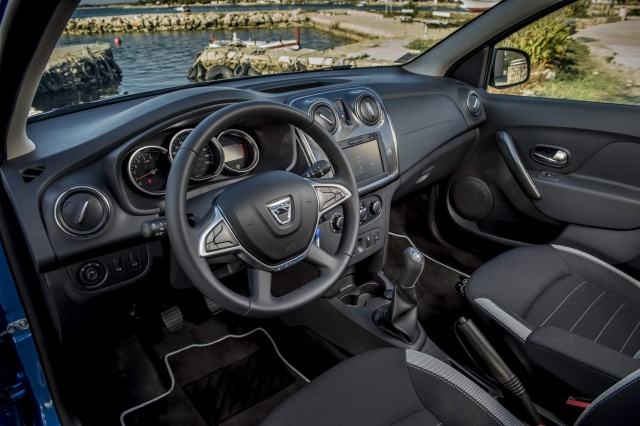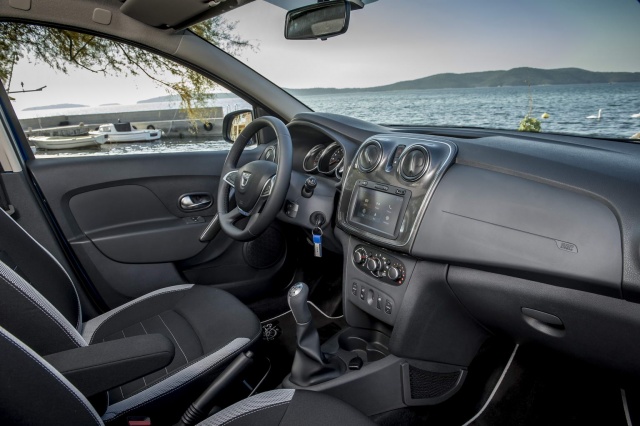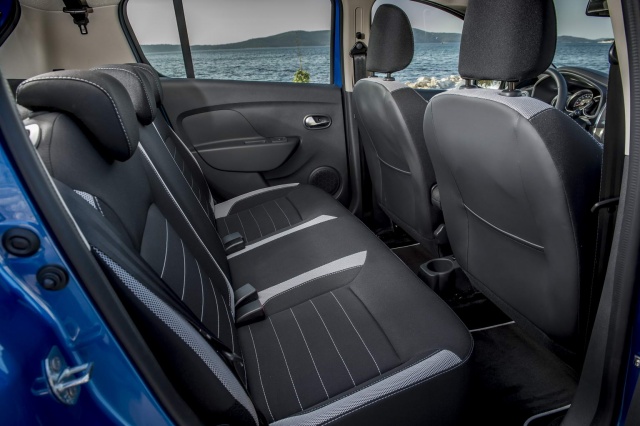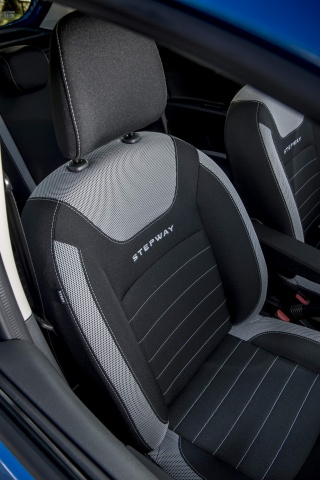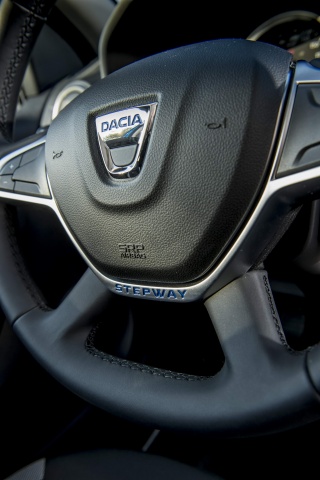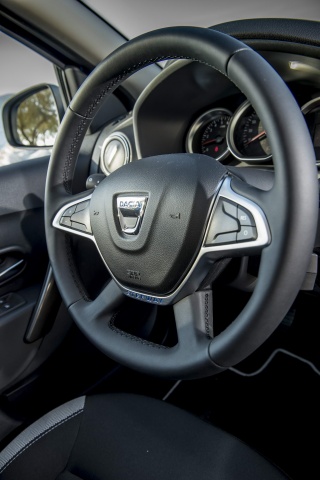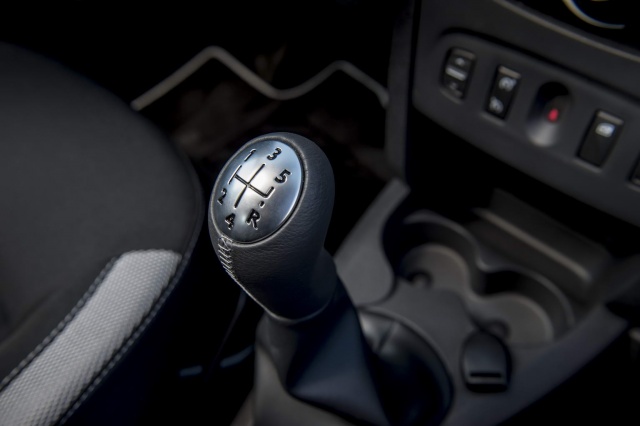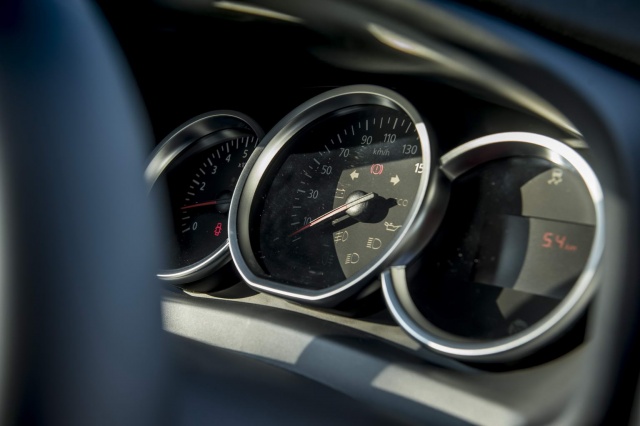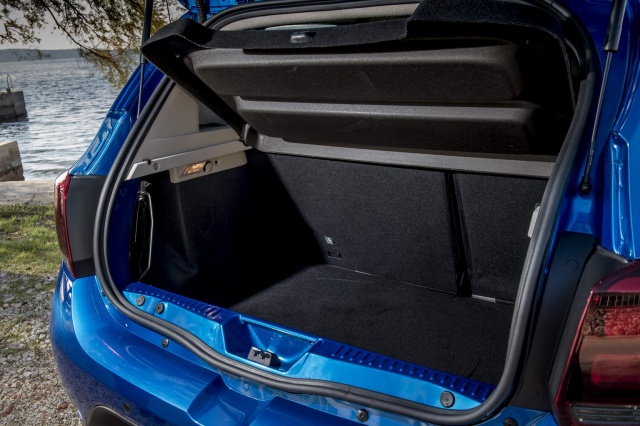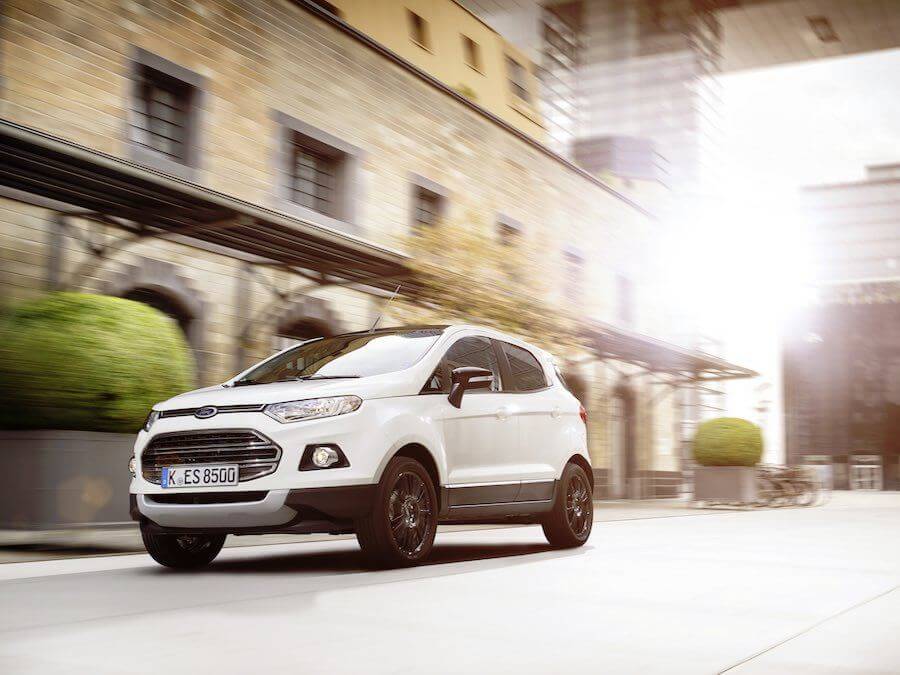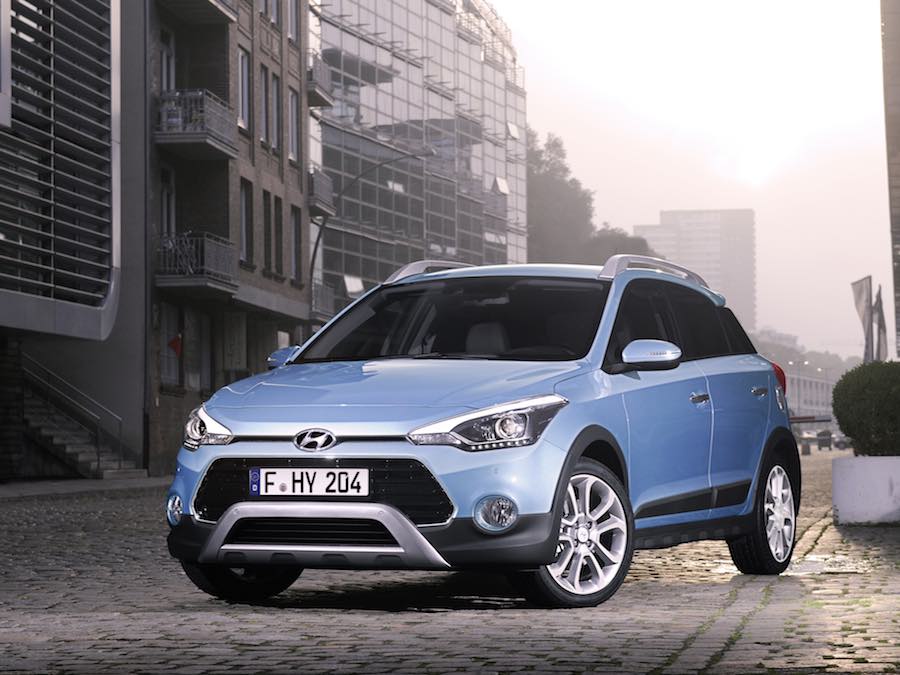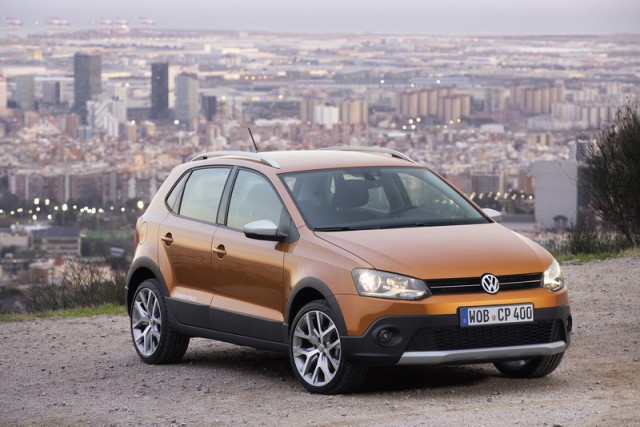Facelifted in line with the rest of the Dacia range, the 2017 model year Sandero Stepway aims to offer the lifestyle addenda and driving experience of any of the modern 'soft-roader' vehicles that ride a bit higher than their regular siblings, but we reckon it doesn't do enough to justify its considerably inflated price tag compared to a normal Sandero hatch.
In the metal
The Stepway is a Dacia Sandero with what the Romanian firm thinks is a bit of attitude. Although, if you follow the automotive scene closely enough, you'll know the Stepway follows a familiar path to 'soft-roader-dom' in a manner akin to vehicles like Audi allroad quattros, Volvo Cross Countrys (Countries?) and Skoda Scouts. Which means the Stepway has black plastic extrusions on its wheel arches and side sills, some fake skid plates in silvery plastic front and rear, roof rails so you can strap your kayak/skis/Thule roof box to the top of it, a ride height increased by around four centimetres and its own design of alloy wheels, somehow believed to conjure up thoughts of the wilderness and adrenaline-pumping adventure.
Still, it had all of the above features nearly three years ago when we first drove it and Dacia still doesn't offer the Stepway with four-wheel drive that would make it a bit more intelligible in the Sandero family, so otherwise what has changed? As with all of Dacia's vehicles, the Stepway now has more distinctive light signatures all round, which feature a stacked array of rectangles that are reminiscent of a GT-spec Kia's 'ice cube' daytime running lamps, a restyled front grille that - in this instance - takes its cues from the Duster off-roader to further augment the green-lane image, a chromed exhaust tip and some sundry trim alterations outside and in.
Stepway-specific graphics are included on the front doors just below the mirrors and emblazoned on the new seats with their 'dark carbon' patterned cloth, although once you're sat in those (and thus are obscuring both the logo and the pattern), the only giveaway to its Sandero-plus leanings is the blue 'Stepway' emblem just below the new steering wheel's centre boss. It certainly doesn't feel taller from behind said four-spoke wheel than a normal Sandero and there's a dearth of earthy, mud trail-type interior detailing to make it feel any more special than the regular hatch. Which means, as we head out on the roads to test drive the refreshed version, we're less than convinced of the Stepway's merits over and above a Sandero...
Driving it
Driven back-to-back with a Sandero hatch with the new 73hp 1.0-litre three-cylinder normally aspirated engine, a few things quickly became apparent about the Stepway. One, it doesn't seem to ride substantially better, if at all, than the lower hatch, despite supposedly softer springs and dampers. Two, despite this first assertion, there's nevertheless even more body lean on the taller Stepway than there is on a regular Sandero. Three, the 0.9-litre 90hp TCe engine spent the first 15 minutes of our test drive trying to convince us it was the less powerful three-cylinder unit - the Stepway TCe felt just as sluggish as the Sandero, despite its considerable on-paper performance advantages (it is, for example, said to be more than three seconds quicker in clocking 0-100km/h), while any benefits of its 140Nm of turbocharged torque were utterly lost to the ether when it came to clambering up only moderate inclines.
And - perhaps most tellingly of all - we still come to the same conclusion as we always have when driving the Stepway, which is as follows: if you want a decent, spacious five-door Dacia, then for the needs of the vast, vast majority of buyers we cannot fathom why you'd opt for the relatively expensive Stepway over the Sandero. It doesn't seem to offer anything noteworthy in addition to the Sandero's driving experience and because you can't get the 1.0-litre SCe unit in the Stepway, then its starting price is €2,500 more than a 73hp Sandero in identical Signature trim. That's 21.4 per cent dearer, which seems a lot for a bit of plastic body cladding and a few Stepway logos.
Sure, it has the extra ground clearance of 41mm, which means it does have a minor benefit for a handful of people who really do go down the rutted tracks in the country, even if Dacia won't be offering it with four-wheel drive any time soon to actually make the most of its loftiness. And, in fairness, it doesn't drive any worse than the Sandero - it has the same modestly good ride, the same acceptable refinement at lower revs, the same ability to hold its own on a motorway, the same underwhelming steering and five-speed gearbox that feels like prodding around in a bucket of bolts with a stick of bamboo, the same reluctance to venture into the upper echelons of the rev counter. All fine and acceptable for a budget brand, but surely the Stepway should come across as considerably different to drive than the Sandero - otherwise, what's the point?
What you get for your money
You're buying essentially the same car as a Dacia Sandero, but for more cash. There are no significant additional bits of equipment in either the Stepway's standard-fit or optional kit lists over and above the Sandero, and it has a more restrictive engine choice than the regular hatch with just two 90hp units - this 0.9-litre petrol and a 1.5-litre dCi turbodiesel - on offer. Adding plastic body cladding to it doesn't improve its so-so four-star EuroNCAP rating, either.
Summary
As we pointed out last time we drove a (pre-facelift) Sandero Stepway, Dacia is not alone in offering a 'ruggedised' hatchback that actually offers no off-roading benefits at all, save for a bit of extra ground clearance. Rover did it decades back with the Streetwise and Hyundai is pulling much the same trick now with the i20 Active. Yet the Rover was a before-its-time aberration and Hyundai doesn't charge such a percentage premium (+7.7 per cent) for opting for an Active over a regular, equivalent i20; also, the Active has the lovely 1.0-litre turbocharged three-cylinder petrol engine, which isn't offered elsewhere in the Irish i20 range at the moment and so that makes the higher asking price more understandable.
It's that comparatively steep price difference over and above the Sandero that is the Stepway's biggest failing and the one that undoes its whole case - save for its exterior appearance and a handful of badges in the interior, the Stepway feels exactly like a Sandero. Too much like a Sandero, in fact, given the hefty €2,500 difference between the petrol variants (additional power of the TCe versus the SCe notwithstanding; it doesn't make the performance feel any perkier, that's for sure), and a €1,200 gap on the diesels. And even €1,200, on a hatchback that costs from just €10,190, is simply too much for us to recommend the Stepway as a reasonable alternative to a Sandero sans cladding.

